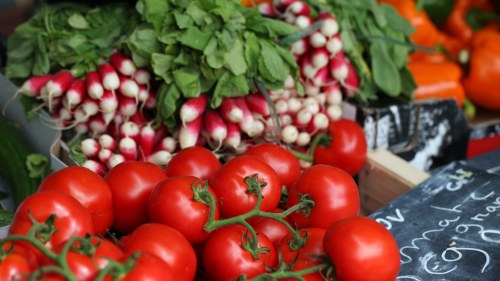The Crisis of Food Deserts

Millions of Americans live in urban food deserts without access to fresh food. A Council Emerging Leaders report details how some cities are beginning to find a way forward.
Urban food insecurity is one of the crushing issues that plague American cities. It’s a fancy name for food deserts—the vast tracts of inner cities that hold millions of America’s poorest people but lack grocery stores or other sources of decent food for them to eat.
Much of the debate so far on what to do about this has been distorted by hype, ideology, and wishful thinking, mostly from good-hearted activists who think that urban farms or non-profit agriculture will solve the problem.
A new and much-needed report has just been issued on this problem, by the Emerging Leaders program of The Chicago Council on Global Affairs, and it should become the basic text for any city trying to feed its poorest people. The report is called “Feeding an Urban World: A Call to Action,” and it’s hard-headed, sensible, devoid of false optimism, and rigorously sourced. It lays out the problem, reports on how some cities are beginning to deal with it and suggests a way forward.
The Emerging Leaders are, as the name implies, Chicago’s best and brightest, movers and shakers in their 30s and 40s, one generation short of running the city. During their two-year program, they focus on a major product. Past classes have dealt in depth with public education, immigration, or privatization of public facilities.
The current class has dived into urban food security, because cities are growing and because many city-dwellers are poor and malnourished—either badly fed or just plain hungry.
One part of the report deals with food problems in big cities in the developing world. This posting doesn’t deal with this section, because I don’t know the territory well enough to judge it. More important, it’s a totally different problem. Third-world cities are overrun by huge and growing populations existing in sprawling shantytowns where the sheer logistics of delivering food don’t exist. Cities like Chicago, by contrast, have an impoverished but often shrinking population of long-term residents living in inner-city neighborhoods that are easy enough to reach but too poor to attract decent groceries.
The report defines urban food security as the ability of residents “to have sustained physical, economic and social access to safe, sufficient, diverse calories and micronutrients required for a healthy lifestyle.” Food deserts are neighborhoods where this access doesn’t exist because they lack “large grocery stores that offer fresh and affordable foods needed to maintain a healthy diet.” This is no small problem: the report cites a USDA study that said 23.5 million Americans lack access to a supermarket within a mile of their home.
There are many reasons for this. Race is one: African-Americans are four times as likely as whites to lack easy access to a supermarket. But sheer poverty is the core reason. Poor people live in poor neighborhoods that are seen as lacking the buying power to attract stores, including grocery stores. Perceived security risks exacerbate the problem. The result is fast-food joints selling more calories than nutrition or corner convenience stores where the closest thing to a square meal is a bag of potato chips.
The real solution here is economic vitality that creates jobs and eliminates poverty. Maybe this vitality will arrive someday. But until it does, what can be done to give residents the simple access to good food that most Americans take for granted?
That’s what the report is all about. It sets up an “urban food model” combining Availability (enough healthy food available on a consistent basis), Access (having enough money to buy good food and good stores that sell it), and Utilization (knowing enough about nutrition to plan and eat a healthy diet). Armed with this framework, it then assesses how cities, American and abroad, are doing.
Some cities—Chicago, Philadelphia, Seattle, Los Angeles and New York, for instance—have recognized food deserts as a major urban problem and have done studies or, even better, set up urban food strategies to deal with it. Unfortunately, there isn’t much hard data on what policies work: more research clearly is needed.
Detroit, which may have the worst urban problems in America, has been committed to community gardening and, later, urban farming for forty years. All this has been promoted by activists, many of whom see this small-scale farming as an alternative to agribusiness. Unfortunately, the report says there is no data available “on the impact of these programs on the nutritional status or food security status of the neediest residents of Detroit.”
In fact, the report injects some healthy skepticism into an area that badly needs it. It quotes a University of Minnesota professor, R. Ford Denison, as saying that “rooftop gardens or skyscrapers full of hydroponics are not going to make a significant contribution to food security.”
So far, no urban farm projects in Detroit, Chicago or Milwaukee are economically sustainable, so “depend heavily on donations, grants, volunteers and government support,” the report says. There’s no sign they can “provide adequate food at economically sustainable prices or spur significant economic development.”
The main value of these programs, it said, is that they can educate neighborhood residents on nutrition and work with young people on healthy eating. This is no small thing: the report makes clear that all the healthy food in the world won’t do any good if local residents don’t know how to use it.
But the only real solution, short of eliminating poverty, is to get grocery stores—preferably chains—in underserved neighborhoods. This means involving corporate leaders —not just grocery chains but food manufacturers—involved in solving the problem.
The report urges Chicago to take the lead on this. Indeed, it notes that the city is already moving ahead, by establishing a food policy, setting up food distribution hubs, rezoning to help develop urban farms and, especially, by pressuring grocery chains to set up in food deserts. Seventeen such supermarkets already exist or are planned, covering the foodie range from Wal-Mart to Whole Foods. Almost as important, nineteen Walgreens drugstores already located in inner cities have added or expanded fresh food sections.
The upshot: the number of Chicago neighborhoods without easy access to a grocery shrank 40 percent from 2006 to 2011, cutting the number of residents living in food deserts nearly in half.
But still too many Chicagoans lack decent food. The report recommends that the city, traditionally an agribusiness center, take the lead “in addressing the new challenges of feeding urban populations, in adopting policies that are a model for other cities, and in utilizing its world-leading corporate, academic, philanthropic and public policy resources to address the issues of urban food security worldwide.”

